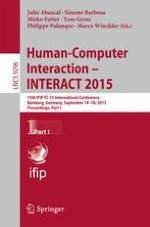2015 | OriginalPaper | Chapter
Recognizing Emotions in Human Computer Interaction: Studying Stress Using Skin Conductance
Authors : Alexandros Liapis, Christos Katsanos, Dimitris Sotiropoulos, Michalis Xenos, Nikos Karousos
Published in: Human-Computer Interaction – INTERACT 2015
Publisher: Springer International Publishing
Activate our intelligent search to find suitable subject content or patents.
Select sections of text to find matching patents with Artificial Intelligence. powered by
Select sections of text to find additional relevant content using AI-assisted search. powered by
